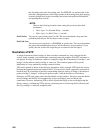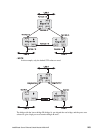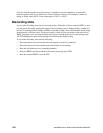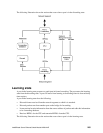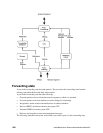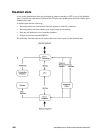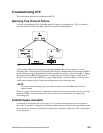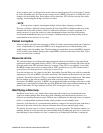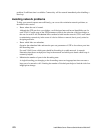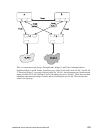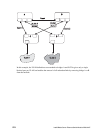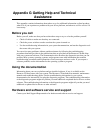
270 Intel® Blade Server Ethernet Switch Module IXM5414E
In the preceding example, port 1 on bridge B is configured as a full-duplex port and port 1 on bridge
A is either configured as a half-duplex port or is left in auto-negotiation mode. Because port 1 on
bridge B is configured as a full-duplex port, it does not test for carrier sense when accessing the link.
Bridge B will then start sending packets even if bridge A is using the link. A will then detect
collisions and begin to run the flow control algorithm. If there is enough traffic between bridges B
and A, all packets (including BPDUs) will be dropped. If the BPDUs sent from bridge A to bridge B
are dropped for longer than the Max. Age, bridge B will lose its connection to the root (bridge A)
and will unblock its connection to bridge C. This will create a data loop.
Unidirectional link
Unidirectional links can be caused by an undetected failure in one side of a fiber cable or by a
problem with a port’s transceiver. Any failure that enables a link to remain up while providing one-
way communication is very likely to cause a Spanning Tree Protocol failure.
A
Root
B
C
Blocked
Port 1
Port 1
Port 1
Port 1
Port 1
Port 1
Port 2
Port 2
Port 2
Port 2
Port 2
Port 2
Designated
Half-duplex
Full-duplex
Collision
BPDUs
Discarded
A
Root
B
C
Blocked
Port 1
Port 1
Port 1
Port 1
Port 1
Port 1
Port 2
Port 2
Port 2
Port 2
Port 2
Port 2
Designated
BPDUs Lost
BPDUs Lost



